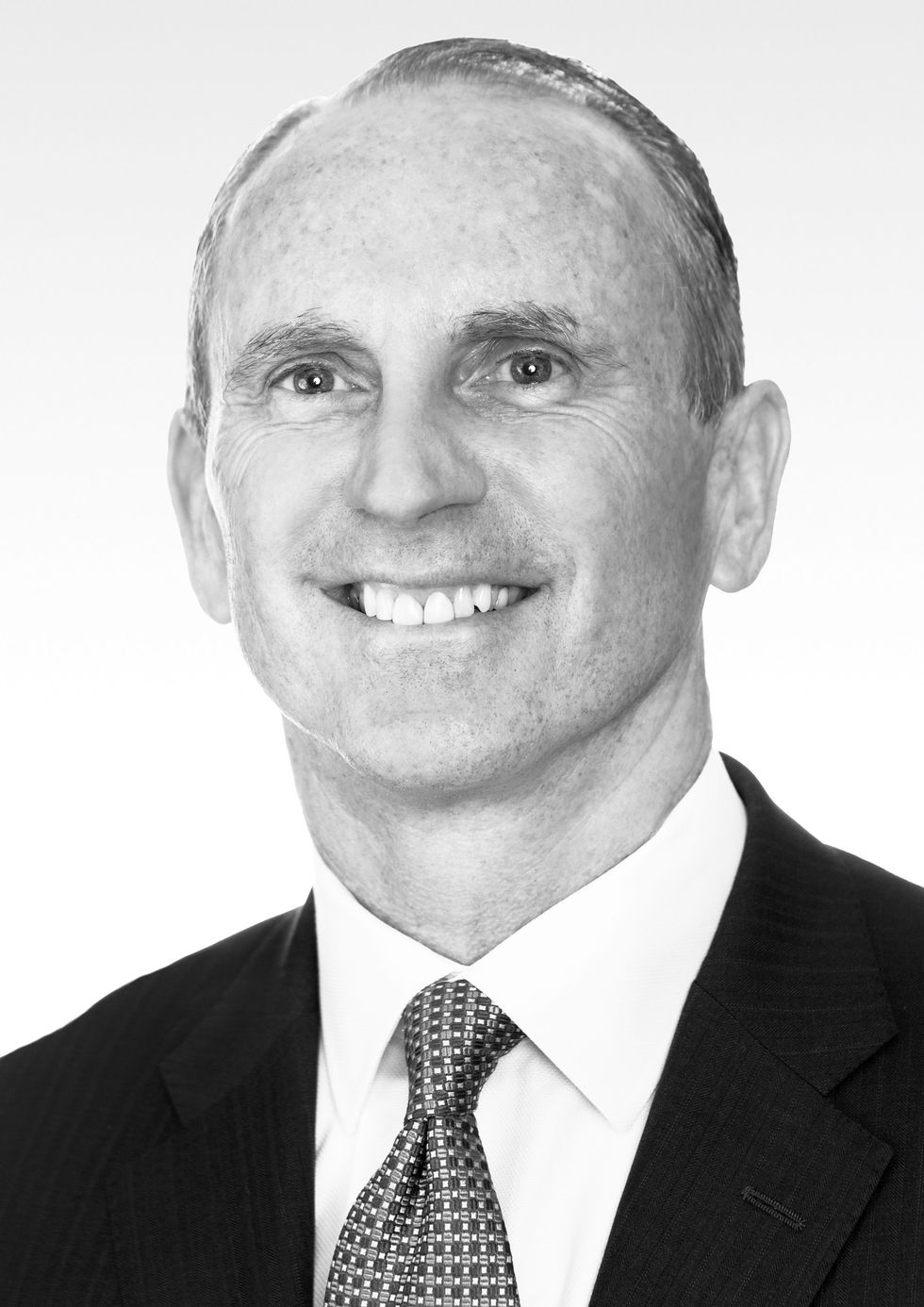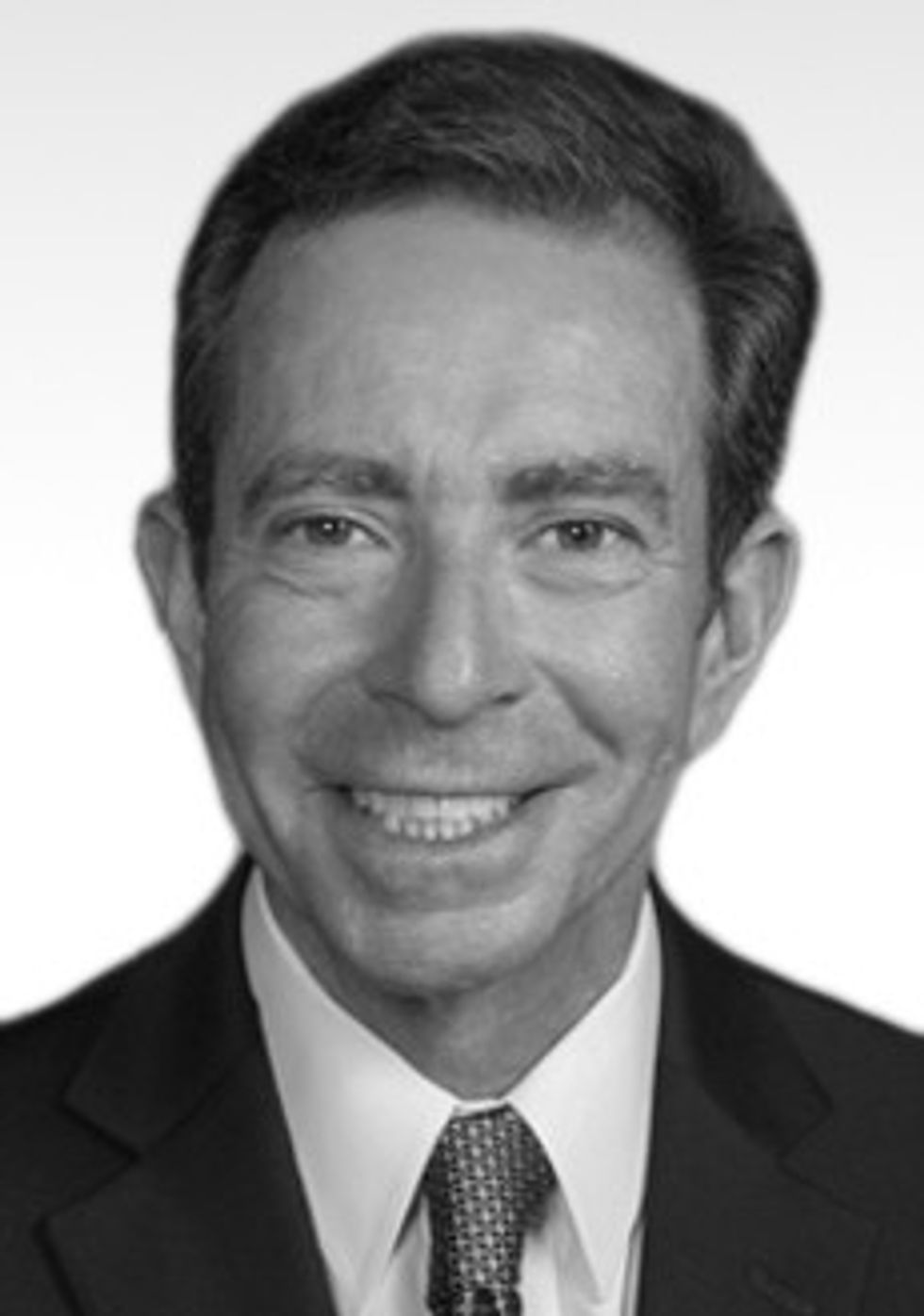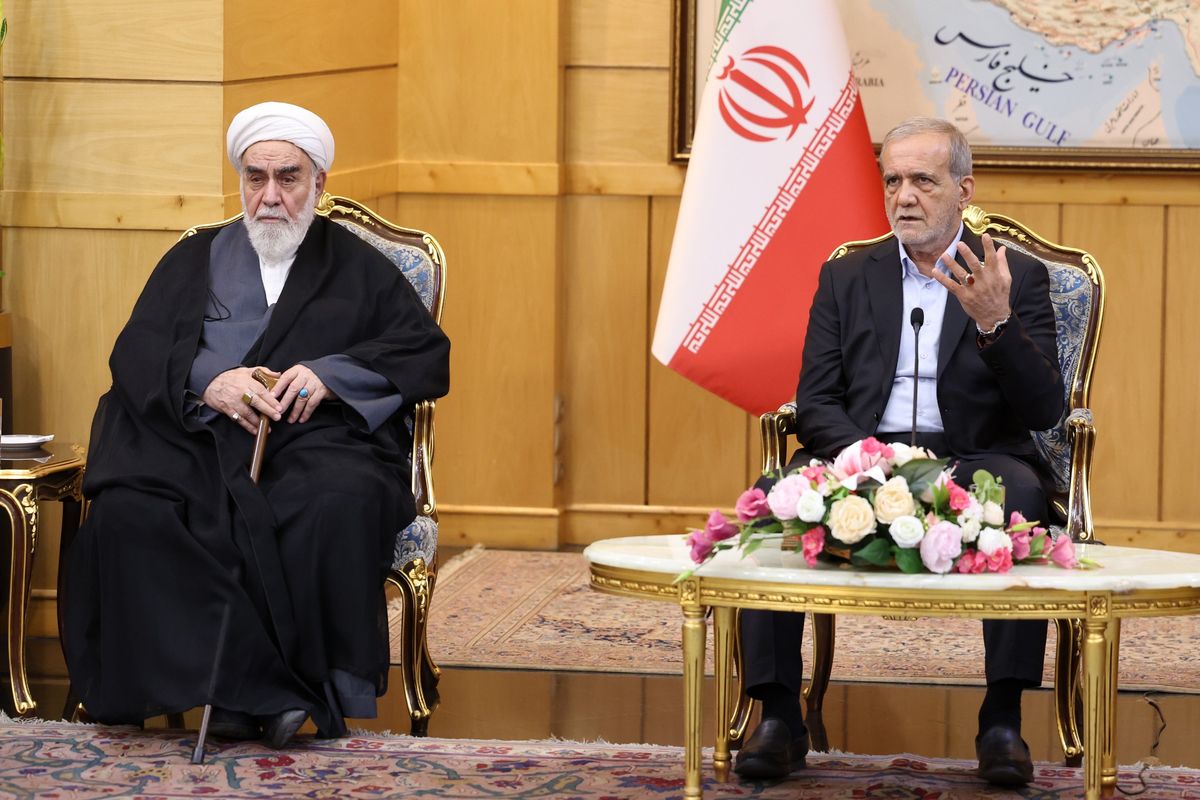Bottom Line: Tehran’s military doctrine seeks to deter a conventionally superior foe, the United States, from entering its territorial waters or borders through the threat of asymmetric retaliation. But with the expansion of Iran’s maritime reach – alongside their success in various proxy conflicts – Tehran’s efforts could have lasting implications for the balance of power in the Middle East.
Background: Iran has sought to take advantage of regional conflicts through covert support for proxy groups to challenge the regional hegemony of the United States through its allies: Israel, Saudi Arabia and other Sunni Muslim Arab regimes in the region. At the same time, Tehran has tailored is military doctrine to counter and deter the United States from engaging militarily with Iran. To accomplish this, Tehran has pursued a deterrence-based model of attrition warfare – avoiding direct or sustained confrontations, and instead relying on surprise attacks and hit-and-run operations – that raises their opponent’s risks and costs in order to psychologically inhibit the willingness of opponents to fight in the first place.
- The origins of Iran’s military doctrine can be found during the Iran-Iraq war of the 1980s, where the newly established Islamic Republic adopted hybrid models of U.S. and Soviet doctrines. A point of departure came at the end of the Tanker War in 1988, when the U.S. launched Operation Praying Mantis in retaliation for an Iranian mine damaging a U.S. frigate. The U.S. operation destroyed two Iranian oil platforms and several Iranian military surface vessels. Iran, in turn, responded by developing asymmetric responses – i.e. the “smash-and-grab” techniques of guerilla fighters that larger armies or navies find hard to react to.
- Iran doubled down on its doctrine of asymmetric deterrence following 9/11 and the U.S. invasions of Iraq and Afghanistan – which resulted in the removal of Tehran’s primarily rivals, the Ba’athists and the Taliban – but also positioned U.S. forces along the country’s eastern and western flanks. Tehran has sought to expand its influence in the region through covert and therefore deniable support of proxy actors in Iraq, Syria, Lebanon, Yemen and Bahrain.
- Iran’s armed forces involve two pillars: the Iranian conventional military, known as Artesh, and the paramilitary protectors of the 1979 Islamic Revolution, the Iranian Revolutionary Guard Corps (IRGC), or Sepah-e-Pasaran Enghelab Islami. Following the gutting of the Artesh in the aftermath of the revolution, the IRGC and its volunteer force, the Basij, or “Mobilization of the Oppressed,” are primarily responsible for the country’s internal security, while the formal military is responsible for external conventional threats. The IRGC’s expeditionary Quds Force is responsible for the country’s covert action abroad, including support for proxy groups such as Hezbollah.
- Following the July 2015 multilateral nuclear agreement, known as the Joint Comprehensive Plan of Action (JCPOA), Tehran has continued supporting proxy militias in the region as well as developing its ballistic missile program under the IRGC. In response, the Trump administration, along with Congress, have imposed additional sanctions on Iran’s defense procurement avenues. However, to date, sanctions have remained ineffective in reeling in Iran’s growing regional influence.
Issue: While Iran’s covert support of proxy groups is intended to undermine U.S. strategic interests in the region and in turn expand Tehran’s influence, Iran’s more overt military activity also presents a threat to U.S. geostrategic interests. Tehran’s asymmetric naval doctrine of deterrence and area denial along strategic waterways such as the Strait of Hormuz, the gateway for some 30 percent of the world’s oil supply, is of particular concern. The actors primarily responsible are the IRGC’s Navy, and to a lesser extent, Iran’s regular navy.
- Iran’s two navies underwent a reorganization in 2007 that differentiates their responsibilities along geographic lines. The IRGC Navy (IRGCN) is primarily responsible for operating within the close confines of the Persian Gulf and the narrow passage through the Strait of Hormuz, maintaining around 20,000 personnel. The Islamic Republic of Iran Navy (IRIN), with an estimated 18,000 personnel, is a more conventional “green water” navy, and largely operates within the Gulf of Oman and to a lesser extent the Gulf of Aden, Red Sea, and Caspian Sea. Each maintains distinct commands along Iran’s 1,100-mile coastline, with an overlapping presence at Bandar Abbas near the strategic maritime chokepoint connecting the two Gulfs.
- It is estimated that between Iran’s two navies, Iran maintains over 100 surface vessels and submarines. Surface vessels include four Corvettes, 18 IRGC-controlled Chinese made patrol boats and several hundred smaller speedboats capable of high-speed intercepts and “swarming” tactics. IRIN controls three Kilo-class submarines, and Iran claims to have produced its own Ghadir-class subs that were first deployed to the Red Sea in June 2011. Tehran also reportedly possesses a number of smaller “midget” subs procured from North Korea. Iran’s coasts are also littered with land-based cruise missiles under the IRGC’s control that threaten maritime activity in the Persian Gulf.
- “Iran continues to develop a rage of new military capabilities to monitor and target U.S. and allied military assets in the region, including armed UAVs, ballistic missiles, advanced naval mines, unmanned explosive boats, submarines and advanced torpedoes, and anti—ship and land-attack cruise missiles,” warned U.S. Director of National Intelligence Dan Coats in his May 2017 testimony to Congress.
Admiral (ret.) Jonathan Greenert, former Chief of Naval Operations, U.S. Navy
“The Iranian Navy and IRGCN [IRGC’s Navy] are separate in command and control and order of battle. IRGCN are the folks buzzing around in speedboats with .50 cal machine guns. They are more ideological than professional. The Iranian Navy is more professional and predictable with corvettes (200-foot small ships) and a few diesel subs. Both branches are working on improving mine laying, cruise missiles, “maritime IED” and swarm tactics. The sanctions have hurt them; their larger ships, subs and aircraft are aging. They are exploring unmanned aerial vehicles (UAVs) with some success.”
Michael Connell, Principal Research Scientist, Center for Naval Analyses
“Iran’s military still perceives U.S. and coalition navy forces as its primary opponents in the maritime environment. In this regard, both the regular and IRGC navies continue to invest and capabilities that could be considered asymmetric, in that they are designed to maximize Iran’s advantages (terrain, shorter lines of communication, etc.) against technologically superior forces, such as those of the United States.”
- As a strategic pathway, the Strait of Hormuz, at only 29 nautical miles wide at its narrowest point, is nestled in between Iran and its Gulf neighbors. Tehran has threated to close the maritime chokepoint during times of tension, but that would create economic blowback for Iran as well. Still, just threatening the strait’s closure can be an effective tool to pressure or intimidate its opponents. Plus, despite Iran’s naval posture remaining defensive in nature, there is ample room for miscommunication or escalation during interactions between the U.S. Navy and Iranian forces, particularly the IRGCN, which are known to harass U.S. vessels.
Admiral (ret.) Jonathan Greenert, former Chief of Naval Operations, U.S. Navy
“The Strait of Hormuz is Iran’s primary focus. They are pretty much unable to support deployments out of the Arabian Gulf or North Arabian Sea area. They sometimes deploy a surface action group of a handful of ships to Bab el Mandeb strait. A deployment to the eastern Mediterranean a few years ago was hard on them. The greatest threats Iran’s Navy poses are perhaps: long- and medium-range ballistic missiles, mining the Strait of Hormuz or attacking Saudi Arabia’s oil fields in Arabian Gulf to the east.”
Rear Admiral (ret.) Paul Becker, former Director of Intelligence, U.S. Naval Forces Central Command
“Geography is an asymmetric advantage for the IRGCN against the technologically superior U.S. Navy. Their training and exercises indicate they intend to take every advantage of the narrow, shallow, congested waters of the Arabian Gulf and Strait of Hormuz where maneuverability of larger Western ships is difficult and the IRGCN can ‘hit and run’ in large swarms. They also train with coastal defense cruise missiles and mines which have been used effectively against Western ships in the Arabian Gulf in the past.”
Michael Connell, Principal Research Scientist, Center for Naval Analyses
“The regular Iranian navy also routinely operates in the Northern Indian Ocean and the Red Sea. Its vessels have conducted port visits as far afield as the Eastern Mediterranean and the South China Sea, but it will have to overcome various logistical hurdles to maintain a routine presence in these areas. The logistical challenges associated with conducting out-of-area operations would be compounded in the North or South Atlantic, especially if the Iranian navy did not have access to friendly basing.”
Response: Conventionally, Iran is ill-suited to pick a fight with the U.S. in the Persian Gulf. But there is still the possibility of miscommunication and escalation, particularly with the IRGCN. Iran’s support of proxies, such as the Houthis in Yemen, also presents a maritime risk, and stemming the flow of arms to such groups will be necessary to counter that emerging threat.
- The Gulf Cooperation Council members, along with Israel, are the primary players in the U.S. effort to contain Iran militarily. With some 35,000 U.S. forces currently stationed in the Gulf, either through formal defense cooperation agreements (DCAs) and memorandums of understanding or onboard U.S. vessels in the region, the U.S. already maintains a significant presence. Last February, Defense Secretary Jim Mattis stated that despite the threat from Iran, there was no need to send extra forces to the Gulf.
- Given the risk of escalation in the Persian Gulf, it may be worth establishing a direct hotline between U.S. and Iranian commanders in the Gulf. The effort was made in late 2011, but denied by IRGCN commanders. Similarly, creating common guidelines that govern interactions between U.S. and Iranian navies could also alleviate the potential for escalation.
- However, deterring force-on-force escalation becomes more difficult when actions may be taken through deniable means. The January 2017 attack on a Saudi frigate in the Red Sea by Houthi rebels using an Iranian supplied unmanned boat laden with explosives is an example of how Iran may be able to project power in other strategic maritime chokepoints, such as the Bab-el-Mandeb Strait, by supplying proxy forces.
Rear Admiral (ret.) Paul Becker, former Director of Intelligence, U.S. Naval Forces Central Command
“It’s important to highlight the Iranian use of surrogates such as the Quds Force can also pose a maritime threat away from home waters through such groups as the Houthis and Hezbollah who have employed anti ship weapons in the past.”
Anticipation: Iran’s naval doctrine of deterrence and area denial not only presents a threat to the freedom of navigation through strategic waterways. Their increasing maritime capacity also presents a potential soft power tool Tehran could use to establish closer relations with global players such as China, while also projecting power beyond their immediate coastlines.
Michael Connell, Principal Research Scientist, Center for Naval Analyses
“While there have not been any drastic changes, Iran appears to be placing a greater emphasis on power projection than it had in the past, with port visits to Syria, China and Russia, as well as the ongoing counterpiracy mission in the Horn of Africa region.”
Rear Admiral (ret.) Paul Becker, former Director of Intelligence, U.S. Naval Forces Central Command
“The IRIN and IRGCN are continually modernizing and have advanced, lethal maritime capabilities. Tehran exercises a dual-track approach to force procurement: foreign acquisition and indigenous production. Russia, China and North Korea all supply Iran with naval platforms (from submarines to fast-attack craft), weapons (ship and shore-based anti-ship missiles) and associated command and control and electronics equipment. Iranian indigenous capabilities are significant and they have proven adept at reverse engineering foreign weapons. These capabilities are primarily intended to deter and/or fight against the U.S. but they certainly present a threat to GCC navies as well.”
- With the JCPOA and the ease of international sanctions on Iran, the country opened up to additional financial resources that could facilitate its efforts to become more of a regional energy and trade hub, as well as to negotiate future arms purchases. Its aging naval vessels – some of which date back to the days of the Shah – could be replaced with new assets purchased from Russia or China. However, the U.S. could veto sales of most conventional arms to Iran because of UN resolution 2231 – the UN Security Council resolution that endorses the JCPOA, which requires UN Security Council approval of such arms sales until July 2020.
- China, as Iran’s largest oil consumer, has a vested interest in the security of the Strait of Hormuz and Iran’s continued utility of it. Beijing sees Iran as a major node within its One Belt, One Road initiative, and its likely to deepen military cooperation with Tehran and seek to strengthen its conventional capabilities. Early indicators include China’s supplying Iran with advanced conventional arms to include patrol boats, anti-ship missiles and ballistic missile guidance systems, as well as their joint naval exercises in the Gulf, in July 2017.
- Iran will increasingly seek to expand its naval presence beyond its immediate vicinity. In February 2011, IRIN sent two vessels into the Mediterranean, transiting the Suez Canal en route to Syria. Since 2014, Iran has sent a few warships into the Atlantic Ocean, likely seeking to demonstrate its growing naval strength. Soon Iran may expand its naval activities to the Indian Ocean, including the Strait of Malacca, or even transit the Atlantic to Latin America. This new challenge may not be primarily a military one, but rather one of influence, where Iran’s navy could effectively garner soft power through maritime partnerships with countries beyond the Middle East.
Michael Connell, Principal Research Scientist, Center for Naval Analyses
“The regular navy has conducted maritime exercises with foreign navies, but most of these exercises have been low-level engagement activities, such as passing exercises (PASSEXs) and search and rescue exercises (SAREXs). Generally speaking, the IRGC navy does not participate in maritime engagement activities with foreign navies. Regular navy engagement partners have included Pakistan, India, Russia, China, and Oman.”
Rear Admiral (ret.) Paul Becker, former Director of Intelligence, U.S. Naval Forces Central Command
“It’s worth watching how much more involved the Russian and Chinese Navies are willing to become with the Iranian Navy for a combination of geo-strategic reasons. I look to the Chinese Navy, with a new logistics base in Djibouti and a near continuous Indian Ocean presence that’s supportive of Beijing’s Belt Road Initiative to expand activities with the Iranian Navy in the future. Looking ahead, three factors likely to impact Iran’s naval strategy and acquisitions are the status of JCPOA, the price of oil and influence of new leaders at the Armed Forces General Staff.”
Levi Maxey is an analyst at The Cipher Brief. Follow him on Twitter @lemax13.















